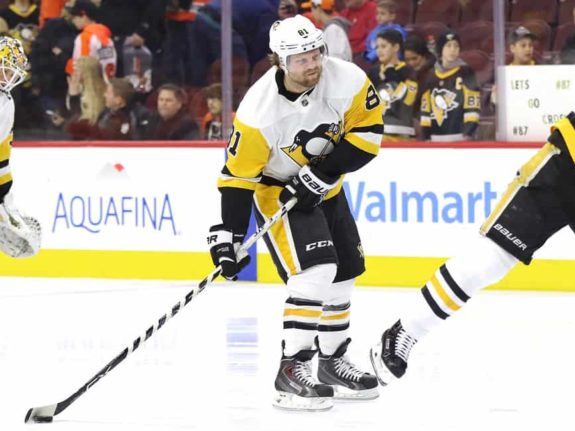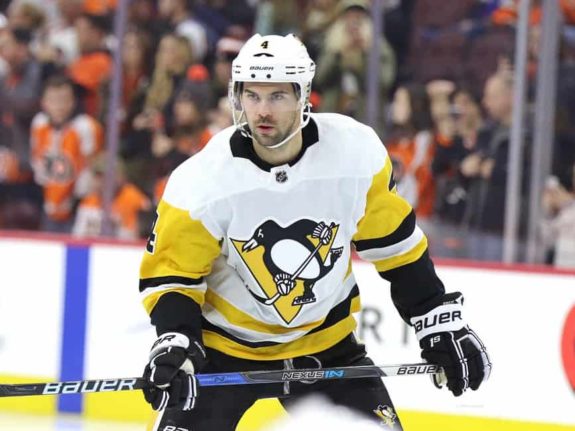With three Stanley Cups to his name, Pittsburgh Penguins’ Jim Rutherford was one of the most successful general managers in recent history. Before joining the Penguins, the former goaltender played an important role in the Carolina Hurricanes’ organization, where he was general manager, president, and part-owner of the team.
After a successful tenure in Carolina, highlighted by a 2006 Stanley Cup championship, Rutherford joined the Penguins on June 6, 2014.
Rutherford is known around the league as a risk-taker. He is always willing to give his team the best chance to win, shown by his efforts on trade deadline day almost every season. Like any GM in the league, he has had his share of wins and losses regarding trades, but the wins have heavily outweighed the losses during his time with the Penguins.
When he arrived in Pittsburgh, Rutherford had a vision of the team he wanted to build around Sidney Crosby and Evgeni Malkin. After heavy reconstruction, Rutherford assembled a speed team that took the league by storm, leading to Stanley Cup championships in 2016 and 2017. The 13-year NHL veteran made key moves since arriving in Pittsburgh.
Forming the “HBK” Line
Rutherford’s signature move thus far in his Penguins’ career is the trade that landed superstar Phil Kessel from the Toronto Maple Leafs. The six-player trade included Kasperi Kapanen going to the Maple Leafs, as well as first and third-round picks in the 2016 NHL Draft. With his wicked shot, Kessel brought an instant boost to the offense.
You may also like:
- 3 Pittsburgh Penguins Emerging as Prime Trade Candidates
- Devils’ Defensive Depth Improves With Marino Trade
- Penguins News & Rumors: Burke Talks Malkin, Free-Agent Targets & More
- NHL Rumors: Penguins, Blues, Oilers, Maple Leafs, Capitals
- Penguins’ Offseason Complicated by Malkin’s Murky Future
In his time with the Penguins, he scored 303 points in four seasons, along with 56 points in 65 playoff games. The highlight of his playoff success came in 2016, where it was the “third line” that led the way offensively. Along with linemates Nick Bonino and Carl Hagelin, the “HBK” line put the league on notice.

Following the Kessel trade, Rutherford went right back to work, acquiring center Bonino and a second-round pick only 27 days later. Brandon Sutter and a third-round pick were sent back to the Vancouver Canucks. Although Sutter has had a solid NHL career, he never truly fit in at the third line center position in Pittsburgh.
On the other hand, Bonino’s arrival solidified a deep center core with Crosby and Malkin leading the way. Along with the instant chemistry created on the third line, he was an excellent penalty killer. With 18 points in the 2016 playoffs, the Penguins were able to rely on all four lines and attack teams in waves.
The final piece of the “HBK” line was Hagelin. In a trade with the Anaheim Ducks, Rutherford dealt forward David Perron and defenseman Adam Clendening for the speedy winger. Similar to the trade that sent Sutter to the Canucks, Perron never fit in Pittsburgh, making him expendable.
The Hagelin-Bonino-Kessel line combined for 56 points in the 2016 playoffs. With a relentless forecheck along with speed on the wings, the “HBK” line thrived, giving the opposition fits. The top two lines anchored by Crosby and Malkin were enough to worry about, but the presence of three dominant lines put the Penguins’ offense over the top.
Justin Schultz’s Arrival
Before Justin Schultz’s arrival in Pittsburgh, the offensive defenseman was a combined -78 in four seasons with the Edmonton Oilers. A change of scenery was needed, and in February of 2016, that change became a reality. Looking to add depth on the blue line, Rutherford acquired Schultz for a 2016 third-round pick. In five seasons with Pittsburgh, the former Oiler was a +43 and played a major role in the 2017 Stanley Cup run.
Midway through the 2016-17 season, the Penguins received the awful news that star defenseman Kris Letang was done for the season due to a herniated disk in his neck. After he dominated in the 2016 playoffs, the idea of winning another Stanley Cup, this time without Letang, seemed impossible. Playing the best hockey of his career, Schultz stepped up and led the way on the blue line, scoring 51 points in the 2016-17 regular season. In the playoffs, he put up 13 points in 21 games, scoring key goals in the process.

Schultz fit in perfectly with the style that head coach Mike Sullivan implemented. With his strong skating, excellent puck movement, and rocket of a shot from the point, he was able to solidify himself as a top-four defenseman. After signing with the Washington Capitals, as an unrestricted free agent this offseason, the two-time Stanley Cup winner will look to continue his strong play.
John Marino Is a Star in the Making
Rutherford struck gold again in a trade with the Edmonton Oilers, where he acquired John Marino for a conditional 2021 sixth-round pick. The 23-year-old scored 26 points in 56 games in his first NHL season and is already a leader on this team. Slotting behind Letang on the depth chart, the former Harvard player gives Rutherford flexibility regarding the future of the blue line. Marino recently signed a six-year deal, locking him into Pittsburgh for the foreseeable future.
The Massachusetts native will be an anchor on the blue line for years to come. With only 59 games of NHL experience, he will continue to grow and mature into a top defenseman. With Marino, Letang, Brian Dumoulin, and Marcus Pettersson making up the top four, the Penguins defensive core is in good hands moving forward.
Rutherford’s efforts and skills have been on full display since arriving in Pittsburgh. At 71-years-old, the Ontario native has had a tremendous career, proven by his induction to the Hockey Hall of Fame in 2019. The drive to win a third Stanley Cup with the Penguins is evident, and he will continue to do whatever it takes to give his team a chance to win. When his general managing career comes to a close, Rutherford will be remembered as one of the best.
